Home / Blog / Inspiration / Content Fragmentation: The Quick and Easy Way to Content Ideation
Content Fragmentation: The Quick and Easy Way to Content Ideation

Aug 25, 2023
Share to
In the vast landscape of content creation, hitting a dry patch where fresh ideas seem elusive is something even seasoned creators experience. We’ve all been there: the cursor blinking back at us, waiting for that spark of inspiration…
That’s precisely where I found myself not too long ago. But as with most challenges, it led to innovation. Introducing a new content ideation methodology I’m dubbing: “content fragmentation.”
Little caveat – this isn’t a groundbreaking or particular “clever” method. It’s just a really quick and easy way to generate new content ideas when you’re stuck and the client wants some content quick time.
Watch the video below, or keep reading if you’d prefer (there is a little easter egg for at the bottom of the article to be fair).
The Backstory
I was recently tasked with coming up with some new content ideas for an e-commerce business, ‘Latham’s Steel Doors.’ As their name suggests, they specialize in steel security products for commercial businesses and homes. With an already exhaustive blog, they were looking for some fresh content inspiration. Enter content fragmentation.
So, What is “Content Fragmentation?“
At its core, content fragmentation is a quick and dirty method to generate keyword or guide ideas. Here’s the gist: High-ranking search results often aim for multiple related keywords. However, many of these keywords deserve their own articles. Our goal is to spot these chances and “fragment” those top articles into distinct pieces. Confused? Let’s use an example to illustrate.
For Latham’s, I started by randomly picking one of their products. In this instance, “high security front doors”.

My goal is to uncover content ideas related to this product. This will allow me to craft a series of interconnected articles, each linking to one another and eventually pointing back to the main category page.
First, I ask: “What’s the main problem this product solves?” For this example, it’s “residential burglary” (or some variation of this). That becomes my “seed keyword”.
Now Dive into Google
Start by Googling your seed keyword – in this case, “residential burglary.” Then, click on the first link – in this case, it’s an article from the Met Police.

We’re basically going to get all the top 100 keywords this top piece of content ranks for, and “fragment” it out into various subtopics using Keyword Clustering.
If you use the ahrefs toolbar, you can quickly get to all the keywords by clicking this icon:

If you don’t use ahrefs, or it doesn’t work, simply copy the URL and paste it into your keyword research tool of choice. We’ve actually got a feature in Keyword Insights for this too. Using our Keyword Discovery tool, you can enter a domain or URL prefix, and it’ll fetch the keywords it’s ranking for.

However, it is currently in BETA so results may vary quite significantly. For that reason, you may still prefer to use other keyword research tools for the time being (we’re working on it though – we promise!).
Export, Re-upload, and Fragment!
In this example, I used ahrefs.
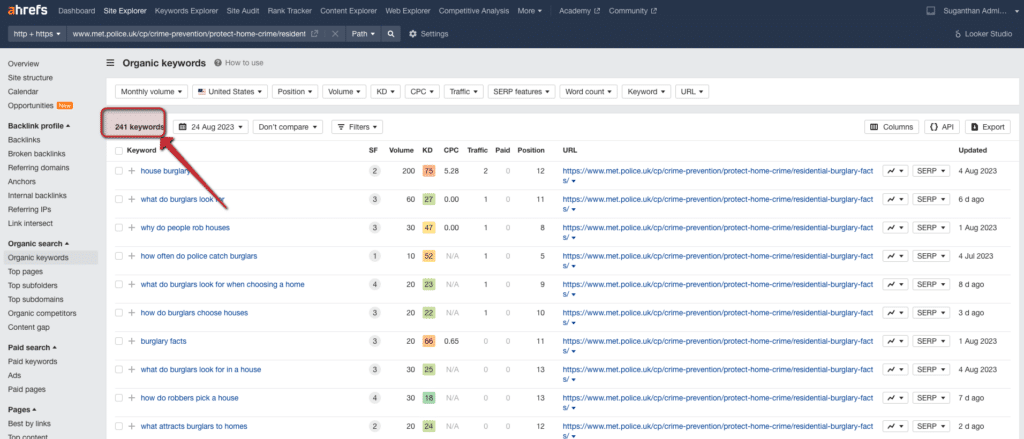
Export all the keywords you find – for my example, I got 241. Then, re-upload them into our keyword clustering module.
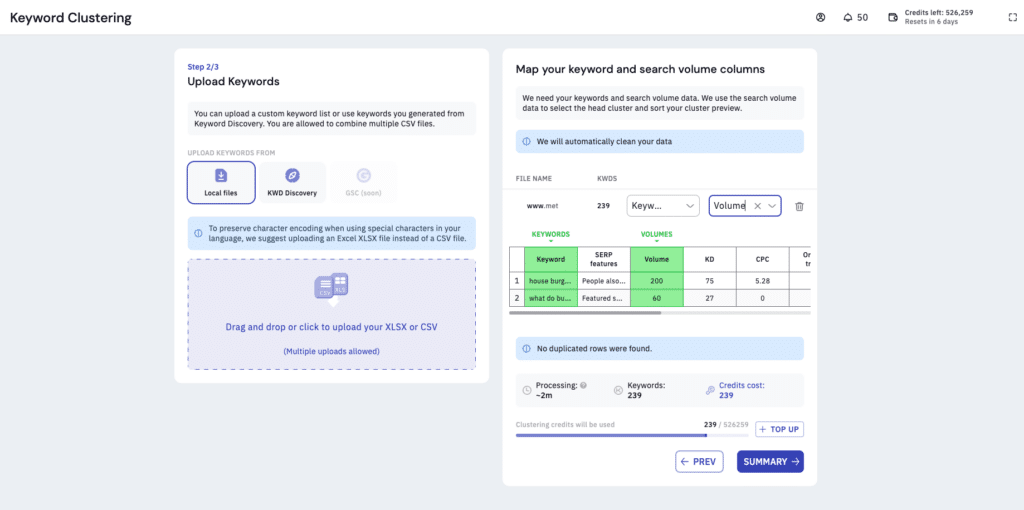
Keep in mind, that our aim is to assess how many keywords the original article targets and then figure out how many distinct articles could be crafted from these keywords. Essentially, the leading article did great for certain keywords, decent for some, and not so well for others. We’re looking to fragment these and get a steer on what, and how many, articles are needed to optimally rank for EVERY keyword.
In this example, the original article seemed to rank for 241 keywords, even if it wasn’t their intention (averaging a rank of 52.51 across all terms). This suggests they touched on a broad spectrum of topics. Many of these could probably be split into distinct, individual articles.
Anyway, whilst you’re waiting for the report to run (should only be a few minutes), go practice your synchronised dancing or something. My efforts can be seen in the video below (I’m at the back).
The Rewarding Finale: Loads of Content Ideas!
Once the report has finished running, you’ll get an email. In this example, our clustering algorithm has shown that the initial 241 keywords would be best served by being broken down into 25 distinct content ideas.
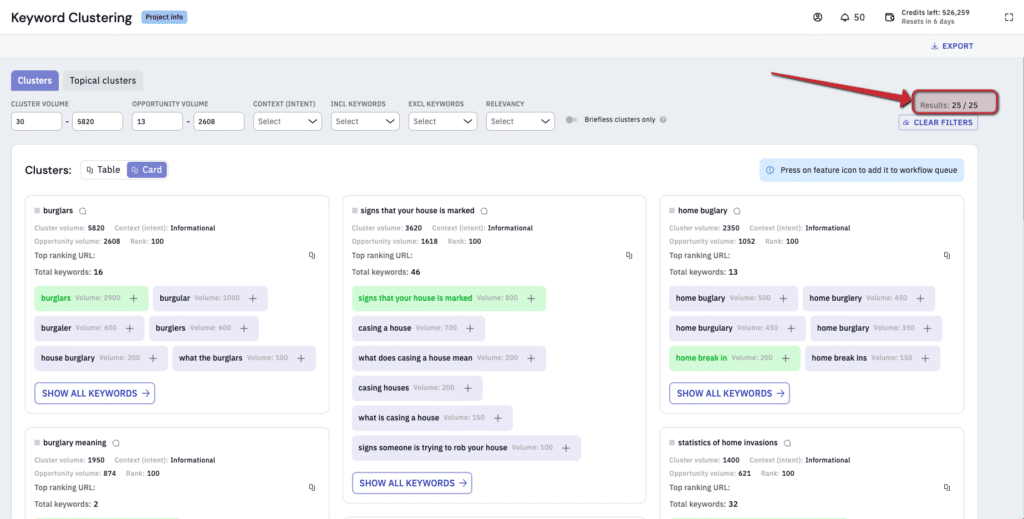
And look how many good ideas we can write about!
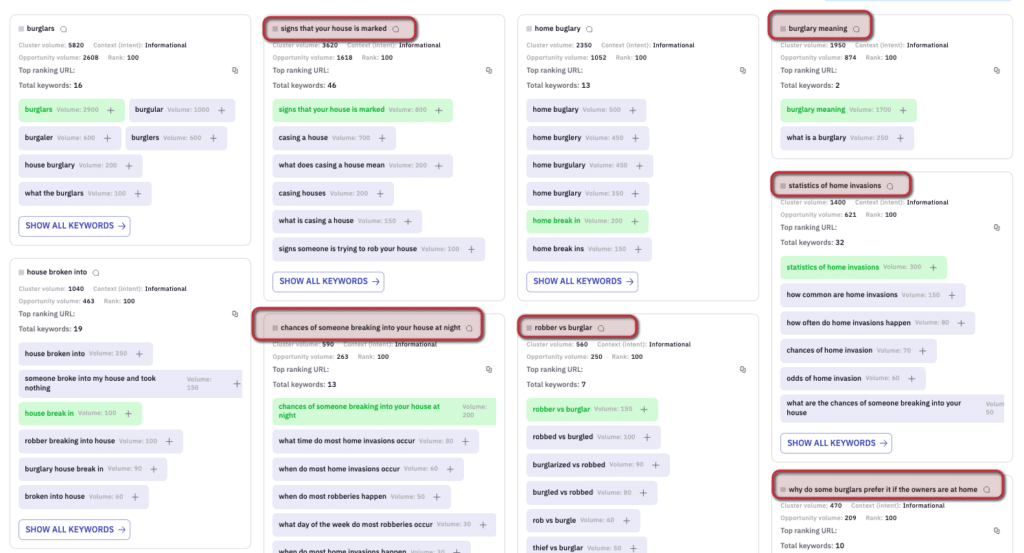
We also show where your target domain ranks for each topic cluster. If you’ve already covered a topic, just filter it out. This way, you only see new content ideas. For Latham’s, they didn’t rank for any topics, so all the ideas are brand new for them. Simple!
Think about it: In just a few minutes, from one keyword, we’ve unlocked a trove of articles ranging from discussing burglars in general to signs your house may be being cased. If we produce all these pieces of content, we’ll stand the best chance of ranking individually for each. Moreover, we already have 25ish ideas that we can internally link between as they’re all on a very similar topic.
And the best part? It’s super easy to convert these ideas into content outlines if you’ve been working within Keyword Insights. Just click any little plus icon on a keyword cluster, and we’ll send that keyword to our content briefing tool. Depending on when you’re reading this article, you could also send it to our AI writer assistant to begin spinning the article up even quicker with the help of generative AI.
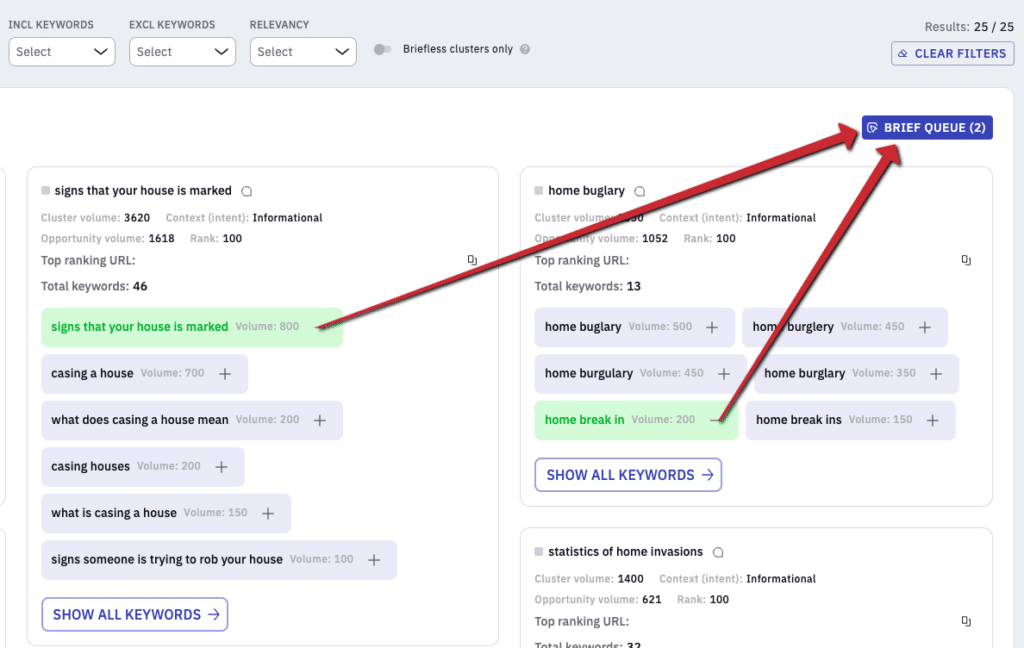
Bonus Tip
We pulled these keywords just from the highest-ranking article. But, if you want to go the extra mile, why not gather keywords from more top articles? Plus, you can amp up your research by mixing in data from big-name SEO tools like ahrefs and Semrush. With our platform, merging multiple CSVs from different sources is easy. Just bulk upload your files, and you’re good to go.
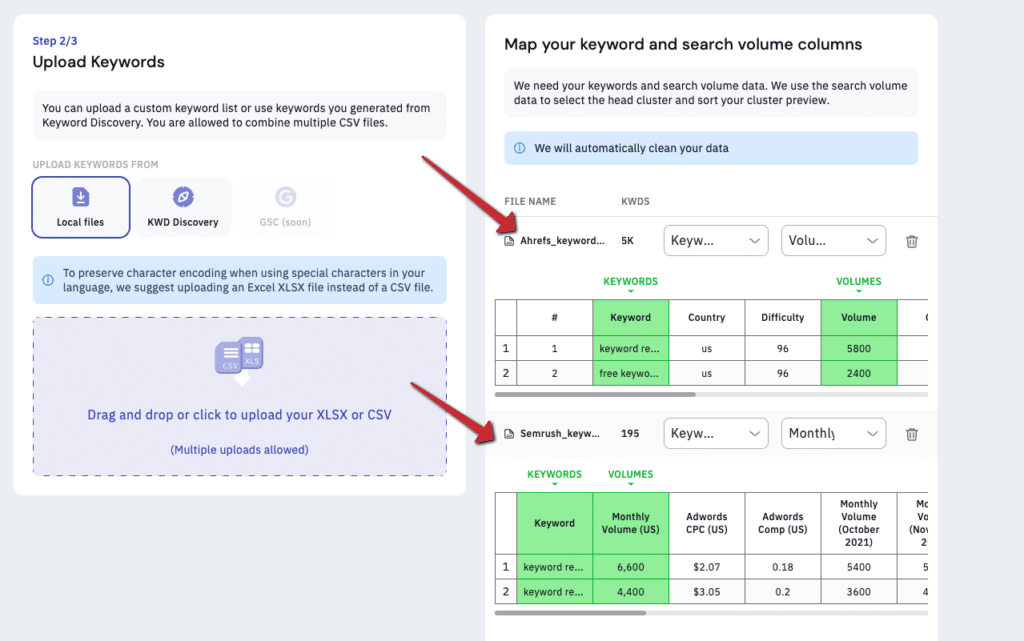
Wrapping up
There you have it – a brief introduction to the world of content fragmentation. A method I swear by when in need of swift content ideation. To summarise, follow these simple steps for quick content ideas.
- Think of a seed keyword. It’s a no-brainer – just pick a product or topic you’re keen on.
- Pop it into Google.
- Dive into the first result (or check out the first few if you’re feeling it).
- Chuck those URLs into your top-choice keyword research tool to see all the keywords they’re vying for.
- Take those juicy lists and feed them into Keyword Insights’s clustering magic.
- Bam! You’ve just done some content splintering and unlocked a treasure trove of related content ideas.
Give it a whirl and drop your thoughts in the comments. Cheers, and happy fragmenting!
Start your trial today for only $1
Sign up today for a $1 trial and enjoy access to 6000 keyword clustering credits, 3 Keyword discovery searches, 1 Content Brief and Pro versions of SERP Similarity, SERP Explorer.
Subscribe to our newsletter
Subscribe to get our latest news, offers, insights, and any updates.

